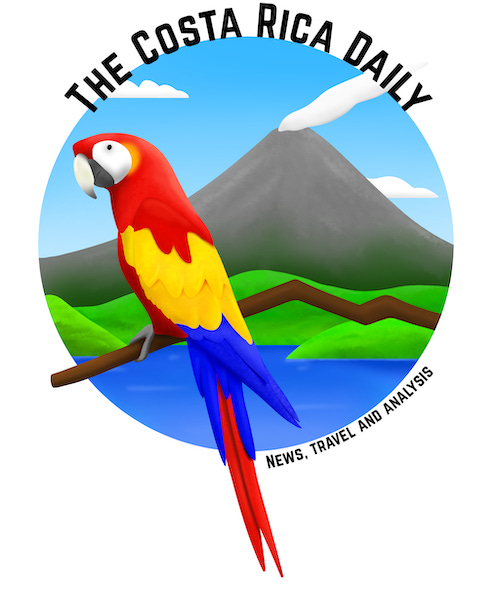Costa Rica had great roads. What went wrong?
It’s no secret that Costa Rica’s roads are lacking.
It’s no secret that Costa Rica’s roads are lacking.
The Inter-American Development Bank said last year that Costa Rica’s paved roads are the worst in Latin America, and navigation platform Waze has called Costa Rica the 10th-worst country in the world to drive. All this comes as no surprise to citizens and residents, who for years have considered Costa Rican roads deficient.
But Costa Rica didn’t always have such bad infrastructure. A 1940s documentary on Costa Rica noted the roads were “some of the best in the world.”
If you have 10 minutes, the whole travel film is well worth watching:
But back to the question at hand: What happened to Costa Rica’s roads? Let’s explore:
Costa Rica has too many cars
Costa Ricans own a lot of vehicles — 231 for every 1,000 inhabitants, to be precise. This places Costa Rica among the countries with the highest vehicle density in Latin America.
This problem has developed quickly. Since 1990, Costa Rica’s population has grown by 60%; over that same period, the number of vehicles has increased by 435%.
“The excuse of the Costa Rican (to buy vehicles) so far has been to say, ‘I have no choice.’ The problem is that the system has not done enough to remove those excuses,” said Andrea San Gil, now an advisor for the Environment Ministry.
Part of Costa Rica’s decarbonization plan is a revamped public-transit system. But that is decades away, so cars remain the best transportation option for many Ticos.
Bureaucracy moves too slowly
As Costa Ricans increasingly turn to cars, bureaucracy has slowed the necessary infrastructure improvements. In some cases, Costa Ricans are quite literally driving on roads designed for another era.
In perhaps the most notable example, Route 27 — the highway connecting San José with the Pacific Coast — was designed in the 1970s and finished in 2010. Shockingly, the 40-year-old designs have proven inadequate to handle the amount of modern-day traffic, and Costa Rica’s “new” highway already needs an overhaul.
“We cannot deny that the system has failed,” said Carlos Segnini, former Public Works and Transport (MOPT) minister. “We are trying to promote initiatives and create special procedures because the current system is very obstructed.”
The problems are often self-caused. Costa Rica’s Water and Sewers Institute (AyA) is notorious for digging up roads to repair pipes… and then never fixing the road. The National Road Council (CONAVI) fills potholes, but it does little else to proactively maintain streets. Municipalities have money to repair local roads, but it often goes unused.
Preventative maintenance, proactive thinking and timely action are all important when it comes to infrastructure — particularly in Costa Rica, where the terrain and weather are treacherous.
Unfortunately, Costa Rican bureaucracy means nothing ever gets done fast.
“I think we have to recognize that, as a country, we have created a system that makes our production inefficient,” said Mario Rodríguez, CONAVI president1.
Ineptitude and corruption
Today, half of Costa Ricans think corruption is increasing. That sentiment is not unwarranted, as several recent infrastructure projects have faced allegations of bribes and contract irregularities.
Whether through corruption or just plain ineptitude, Costa Rican projects have had comically bad outcomes. Some highlights:
The road to Monteverde is finally being paved after 22 years of planning. The company that was contracted for the project has been caught using low-quality, less-durable asphalt that almost certainly won’t last.
It took eight years and $16 million to repair a bridge on arguably Costa Rica’s most important highway. The solution that took nearly a decade? Installing simple expansion joints.
Costa Rica allowed the Pacific railroad to be destroyed when Route 27 was built in the early 2000s. A decade later, the highway is over capacity and the railroad inoperable, so the government is spending half a million dollars to decide whether it’s even feasible to rebuild 131 km of the line it allowed to be destroyed.
Hanlon’s razor remind us “never attribute to malice that which is adequately explained by stupidity.” When it comes to Costa Rica, it might be fair to blame a little bit of both.
Costa Rica’s roads: A summary
It’s not easy to build and maintain roads in a mountainous country with earthquakes and a mudslide-provoking rainy season. It becomes even harder when the number of people using those roads has far surpassed the designed capacity. But almost anyone would agree that Costa Rica could be doing better.
Costa Rica has too many cars largely because there are few other adequate means of transportation. Roads don’t get properly maintained, and improvement plans get bogged down in the weeds of bureaucracy. By the time things get done, they’re often done too late — and not done well at all.
All the while, Costa Ricans dodge potholes and sit in traffic as a result.
Support The Costa Rica Daily
It takes quite a bit of time to research and write these stories. Your support helps pay for the caffeine that makes this possible:
This inefficiency is, in part, meant to tackle corruption, which is common on public-infrastructure projects. In the most memorable instance, apparent irregularities in cement imports involved members of all three of Costa Rica’s Supreme Powers: The Presidency, the Legislative Assembly (Congress) and the Supreme Court of Justice. That political corruption scandal erupted in 2017 and is still known today simply as Cementazo. Not all projects are corrupt, but the threat of corruption impacts all projects.



It is insane how bad it is here to drive! Why don't people complain to the local officials more? Why doesn't the press call out these corrupt companies and government incompetence?